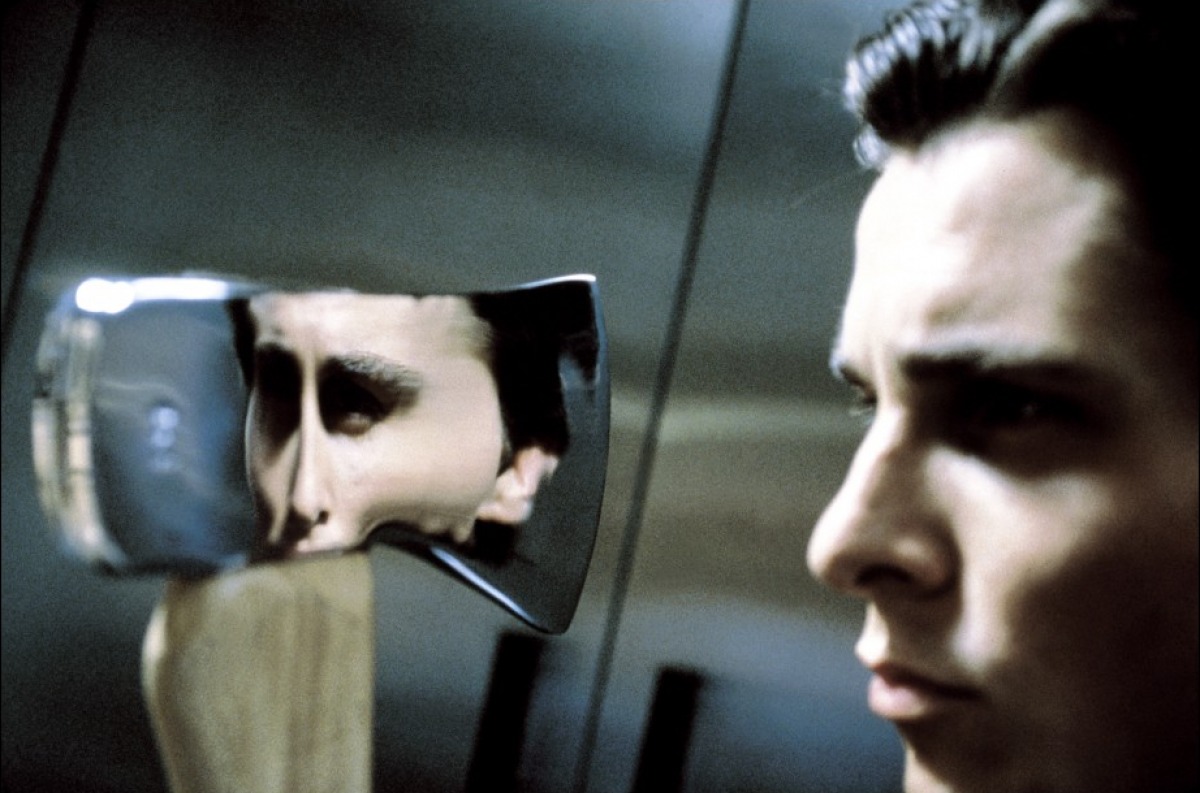

„American Psycho“ von Bret Easton Ellis ist einer der weltweit umstrittensten Romane aller Zeiten. In Deutschland erschien das Buch 1991, 1995 setzte es die Bundesprüfstelle für jugendgefährdende Medien auf den Index. Über 5 Jahre war es nicht frei erhältlich, bis der Verlag Kiepenheuer & Witsch (KiWi) vor dem Oberverwaltungsgericht gegen die Indizierung klagte und gewann. In Australien und Neuseeland müssen Käufer_innen bis heute mindestens 18 Jahre alt sein. Ellis erhielt Morddrohungen, wurde massiv angefeindet und musste sich Misogynie und Sadismus unterstellen lassen. 27 Jahre später ist die Aufregung abgeebbt und „American Psycho“ hat seinen Weg in die Popkultur gefunden. Obwohl er ein Geschöpf der 80er Jahre ist, treffen die vom Protagonisten Patrick Bateman verkörperten gesellschaftlichen Entwicklungen den modernen Zeitgeist. Bateman ist eine Ikone, ein Halloween-Kostüm. Höchste Zeit, ihn kennenzulernen.
Patrick Bateman verbirgt sein wahres Gesicht nicht. Er hat es nicht nötig, sich zu verstecken. Perfekt in der belanglosen Unpersönlichkeit seiner Existenz eingerichtet frönt er seinen abscheulichen Neigungen, ohne fürchten zu müssen, entdeckt zu werden. Er mordet. Er foltert. Die dünne Fassade, die seinen Wahnsinn von seinem Leben als erfolgreicher Banker an der Wall Street trennt, reicht aus, um sein Umfeld zu täuschen. Geblendet von seinem makellosen Körper, seinem teuren Haarschnitt, seiner vollendeten Garderobe und dekadenten Restaurantbesuchen vermutet niemand, was Pat Bateman in Wahrheit ist: ein Schlächter, ein Psychopath. Niemand ahnt, dass sich mitten unter ihnen ein Monster in der Sicherheit der Anonymität eingegraben hat…
„American Psycho“ ist Bret Easton Ellis‘ Kritik an der kapitalistischen Wertentleerung in den USA der 80er Jahre. Der kontroverse Autor gestand lange nach der Veröffentlichung seines Skandalromans, dass dieser in vielerlei Hinsicht autobiografisch ist. Er lebte in den 80ern selbst in New York und befand sich damals in der paradoxen Situation, Teil einer Gesellschaft sein zu wollen, deren Ideale er ablehnte. Sein Protagonist Patrick Bateman personifiziert die Albtraumvorstellung seiner selbst; er ist eine Figur, mit der er sich identifizieren konnte, obwohl er sie fürchtete. Ich respektiere Ellis‘ gerechtfertigte Missbilligung und die persönliche Note, dank der „American Psycho“ entstand. Dennoch frage ich mich, ob dieses Buch in dieser Form tatsächlich nötig war. Es ist menschenverachtend, brutal, widerlich und wenn es nicht gerade Brechreiz provoziert, langweilt es und liest sich wie besonders dreistes, langatmiges Productplacement. In der unerträglichen Ich-Perspektive des reichen, attraktiven Investmentbankers Pat Bateman quälte ich mich durch seitenlange pedantische Beschreibungen materieller Güter, durch unbedeutende Essen mit austauschbaren Narzissten, durch den Alltag eines Mannes, dessen Dasein völlig von Oberflächlichkeiten bestimmt wird. Eine Handlung im herkömmlichen Sinne war für mich nicht erkennbar. Weder hat „American Psycho“ einen richtigen Anfang, noch ein befriedigendes Ende. Ich zappte auf der ersten Seite in das Leben von Pat Bateman hinein und am Schluss wieder heraus. Dazwischen litt ich sehr unter der leidenschaftslosen Monotonie seiner inkonsequenten, distanzierten Litanei und gerade, als ich dachte, schlimmer könne es nicht mehr werden, begannen die Morde. Natürlich wusste ich, dass Bateman einen Dachschaden hat. Die angespannte Aura aggressiven Wahnsinns, die ihn umgibt, war nicht zu ignorieren. Aber was ich seinetwegen zu erleben gezwungen war, werde ich ihm niemals verzeihen. Pat Bateman ist mehr als ein psychopathischer Serienmörder. Er ist ein abscheuliches Monster. Die Mord- und Folterszenen in „American Psycho“ sind das Furchtbarste, das ich jemals lesen musste. Ich wünschte, ich könnte sie aus meinem Gedächtnis löschen. Mich erschütterte nicht nur die kreative Grausamkeit des Protagonisten, mich verstörte auch Bret Easton Ellis‘ Inszenierung der gewalttätigen Abschnitte. Der Autor arbeitete mit sehr harten Kontrasten, sodass das Buch ständig zwischen einlullenden Belanglosigkeiten und explosiven Gräueltaten schwankt. Batemans Gewaltpotential durchläuft dabei eine alarmierende Abwärtsspirale, seine Verbrechen werden von Mal zu Mal dreister, intensiver und abstoßender. Es wirkte, als wollte Ellis den größtmöglichen Effekt erzielen und auch noch die letzten Leser_innen aus ihren Komfortzonen katapultieren. Er musste immer noch einen draufsetzen. Neben diesen plastischen und plakativen Schilderungen spielte es für mich beinahe keine Rolle, dass sein Protagonist ein sehr komplexer, widersprüchlicher Charakter ist, der all das symbolisiert, was in unserer Gesellschaft schiefläuft. Ich verstehe, was er darstellt. Ich begreife, dass Ellis zunehmende Anonymität, Isolation, Konsumorientierung, Maßlosigkeit und Gleichgültigkeit anprangert. Ich erkenne seine Absicht. Doch wer solche Mittel verwendet, muss sich nicht wundern, wenn die Botschaft negativ überstrahlt wird.
„American Psycho“ entzieht sich einem einfachen Urteil. Es ist ein Buch, das sich schwer in Worte fassen lässt. Ich weiß, dass es als moderner Klassiker gilt und kann nachvollziehen, dass Bret Easton Ellis‘ Kritik noch heute Resonanz erzeugt. Meiner Meinung nach ist der kritische Aspekt jedoch zu schwach, um die krassen Extreme zu rechtfertigen, auf die der Autor zurückgreift und das Buch als lesenswert auszuzeichnen. Ich bin nicht gewillt, eine Empfehlung auszusprechen. Ob ihr euch diese Gewaltorgie geben wollt, müsst ihr selbst entscheiden. Vielleicht wäre „Fight Club“ von Chuck Palahniuk die bessere Wahl: thematisch ähnlich, aber harmloser und bekömmlicher.
Ich werde meine Erinnerungen an „American Psycho“ jetzt jedenfalls in einer tiefen, dunklen Ecke meines Hirns wegschließen. Ich möchte nicht länger daran denken.

 Log in with Facebook
Log in with Facebook 







